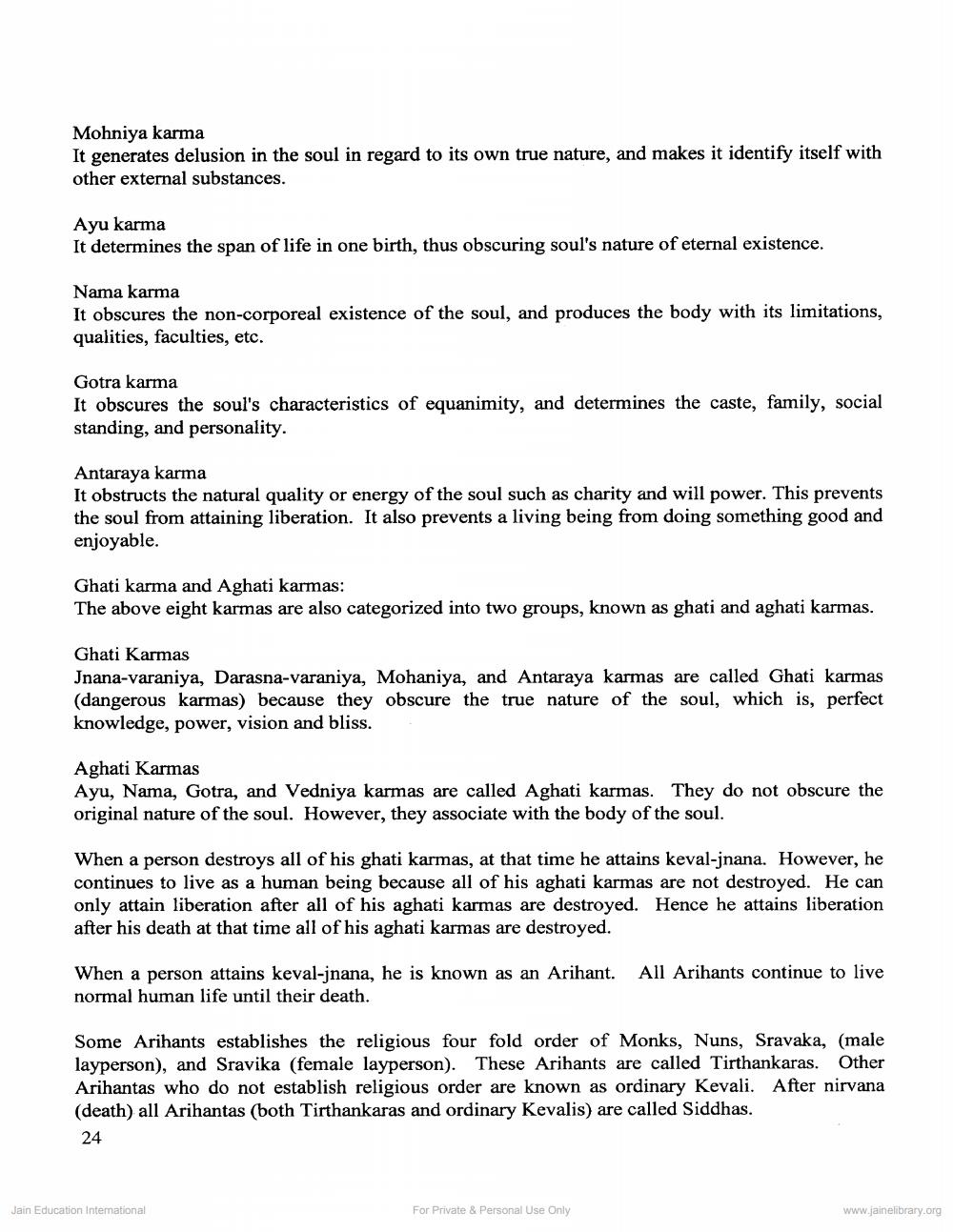________________
Mohniya karma
It generates delusion in the soul in regard to its own true nature, and makes it identify itself with other external substances.
Ayu karma
It determines the span of life in one birth, thus obscuring soul's nature of eternal existence.
Nama karma
It obscures the non-corporeal existence of the soul, and produces the body with its limitations, qualities, faculties, etc.
Gotra karma
It obscures the soul's characteristics of equanimity, and determines the caste, family, social standing, and personality.
Antaraya karma
It obstructs the natural quality or energy of the soul such as charity and will power. This prevents the soul from attaining liberation. It also prevents a living being from doing something good and enjoyable.
Ghati karma and Aghati karmas:
The above eight karmas are also categorized into two groups, known as ghati and aghati karmas.
Ghati Karmas
Jnana-varaniya, Darasna-varaniya, Mohaniya, and Antaraya karmas are called Ghati karmas (dangerous karmas) because they obscure the true nature of the soul, which is, perfect knowledge, power, vision and bliss.
Aghati Karmas
Ayu, Nama, Gotra, and Vedniya karmas are called Aghati karmas. They do not obscure the original nature of the soul. However, they associate with the body of the soul.
When a person destroys all of his ghati karmas, at that time he attains keval-jnana. However, he continues to live as a human being because all of his aghati karmas are not destroyed. He can only attain liberation after all of his aghati karmas are destroyed. Hence he attains liberation after his death at that time all of his aghati karmas are destroyed.
When a person attains keval-jnana, he is known as an Arihant. All Arihants continue to live normal human life until their death.
Some Arihants establishes the religious four fold order of Monks, Nuns, Sravaka, (male layperson), and Sravika (female layperson). These Arihants are called Tirthankaras. Arihantas who do not establish religious order are known as ordinary Kevali. After nirvana (death) all Arihantas (both Tirthankaras and ordinary Kevalis) are called Siddhas.
24
Jain Education International
For Private & Personal Use Only
www.jainelibrary.org




